 Image search results - "oku" Image search results - "oku" |
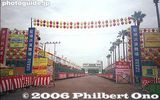
One of Japan's grandest festivals, the Tokushima Awa Odori is a summer dance performed in central Tokushima city. Numerous dance troupes called "ren" appear in a long parade along the city's main streets for four evenings in mid-Aug. About 2 million people see it during the four days it is held. It is like a bon dance to greet the souls of the deceased returning to visit. There are other Awa Odori festivals in Japan, but the one in Tokushima is the original and largest one. "Awa" is the former feudal name of Tokushima. Photo: Entrance to one of the spectator areas called "embujo" (admission charged). 藍場浜演舞場
|
|

Kenrokuen is one of Japan's three most famous gardens (besides Korakuen in Okayama and Kairakuen in Mito, Ibaraki). The garden was originally the castle garden for Kanazawa Castle. Katsurazaka Entrance to Kenrokuen Garden 桂坂口
|
|

Ryogoku Kokugikan sumo arena as seen from Ryogoku Station
|
|

The Kokugikan as seen from JR Ryogoku Station platform.
|
|
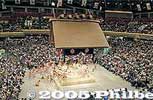
More people than the real tournamentAbout 8,000 people took time out from their Golden Week holidays to see this official sumo practice of all sumo stables.
|
|

Spectator seats. Admission is 1,000 to 2,000 yen.
|
|

Kenrokuen is classified as a "kaiyu-shiki teien" (回遊式庭園) or "circular-strolling Japanese garden." It's a common and classic Japanese garden design where you simply walk around the garden, usually around a central pond.
|
|

Crowd outside the Kokugikan await their favorite wrestlers.
|
|
|
|
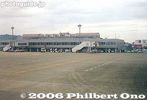
Tokushima Airport
|
|

Crowds already line Tokushima's main street soon to be closed to traffic.
|
|

Kasumigaike Pond and the famous Kotoji-toro stone lantern. The lantern is shaped like a bridge that supports a string on the koto instrument. 霞ヶ池 徽軫灯籠
|
|

Crowd enters the Kokugikan for Musashimaru's retirement ceremony on Oct. 2, 2004.
|
|

Looks like Suganuma, another village in Gokayama area.
|
|

Yokozuna Deliberation Council membersIn the middle is Kitanoumi.
|
|

Tokushima Station
|
|

These photos were taken in Aug. 1999.
|
|

Famous Kotoji-toro stone lantern 徽軫灯籠
|
|

Passing out programs
|
|
|

Sekigahara saw one of Japan's most pivotal battles on Oct. 21, 1600 (Sept. 15 of Keicho 5) between Tokugawa Ieyasu's Eastern Forces and Toyotomi Hideyoshi loyalist Ishida Mitsunari's Western Forces. Ieyasu's victory in the Battle of Sekigahara sealed Japan's historical fate for the next 250 years. The former battlefield is dotted with monuments indicating the positions of various warlords during the battle.
This photo shows Mt. Momokubari where Tokugawa Ieyasu first set up his base camp for the Battle of Sekigahara. It is next to busy Route 21. A short distance east of Sekigahara Station. The former Sekigahara battlefield has numerous monuments.
|
|

Banners and a monument mark the spot on Mt. Momokubari where Tokugawa Ieyasu's first base camp was established during the Battle of Sekigahara on Sept. 15, 1600.
|
|

Ieyasu and his troops were here from about 6 am to 10 am on the day of the Sekigahara battle. He later moved closer to the front line as the battle was going his way. This is a National Historic Place. 桃配山 徳川家康最初陣跡
|
|

Steps going up to Tokugawa Ieyasu's first base camp at Momokubari during the Battle of Sekigahara on Oct. 21, 1600 (Sept. 15 of Keicho 5). Today it's just a small hill. The highway seemed to have cut through most of it.
|
|

Steps going up to Tokugawa Ieyasu's first base camp during the Battle of Sekigahara.
|
|

At the top, see the two large rocks which served as a table and bench for Ieyasu. 家康の腰掛岩と机石
|
|

Monuments marking Tokugawa Ieyasu's first base camp during the Battle of Sekigahara. The banners have the Tokugawa family crest.
|
|

View of the Sekigahara battlefield from Tokugawa Ieyasu's first base camp at Momokubari.
|
|

Monument marking Tokugawa Ieyasu's first base camp during the Battle of Sekigahara.
|
|

Another smaller monument marking Tokugawa Ieyasu's first base camp during the Battle of Sekigahara.
|
|

Sign explaining that the two rocks below were said to be used as a bench and table for Ieyasu.
|
|

Behind the monuments is a trail probably used by Ieyasu's troops on Mt. Momokubari-yama.
|
|
|
|

In front of Tokushima Station
|
|
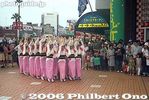
Pre-festival warm-up performance.
|
|

The strolling path is not a perfect circle, but you start and finish at the same point. The strolling path is lined with Japanese pines, flowering plants, maples, etc.
|
|

Musashimaru at the entrance
|
|

Entry road to Ainokura village. Bus stop shelter on right.
|
|

Sumo elders in the front row
|
|
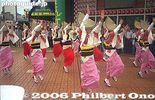
This was in front of a dept. store near Tokushima Station.
|
|
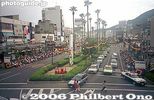
Shinmachi-bashi road in front of Tokushima Station 新町橋通りIt was Awa Odori time.
|
|
|

Musashimaru greets the crowd
|
|

Way to Ainokura, one of the gasshou-zukuri villages in the Gokayama region designated as a World Heritage Site. Ainokura has over 20 houses with steep thatched-roof houses amid high mountains. Ainokura is also a National Important Traditional Townscape Preservation District (重要伝統的建造物群保存地区).
|
|

Former yokozuna Taiho, Takanosato, Kotozakura, and Wakanohana watch intently.
|
|

Sculpture of Awa Odori dancers on mailbox
|
|
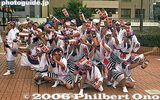
They performed in the afternoon.
|
|

Karasaki Pine Tree in Kenrokuen Garden, Kanazawa, Ishikawa Pref.
|
|

Way to Kokugikan. The guarded side gate on the right is for sumo wrestlers.
|
|

Hawaii's last sumo wrestler shakes hands.If he were married, his wife would be beside him.
|
|

What you see first is a big parking lot for tour buses. Then you see the hordes of tourists.
|
|

Asashoryu greets the council upon entry
|
|

Sculpture of Awa Odori dancers
|
|

Tokushima's Awa Odori originated in 1587 to mark the completion of Izan Castle in Tokushima (formerly called Awa Province). The castle lord allowed the people to celebrate and they danced the night away.
|
|
|

Taiko drum tower
|
|

Musashimaru right after I shook his hand.
|
|

Ainokura monument
|
|

Asashoryu sips water offered by Ozeki ChiyotaikaiAs soon as Asashoryu entered the arena, many wrestlers went up to him to offer water as a show of respect.
|
|

Rear view of a dancer
|
|

Sculpture of Awa Odori dancer
|
|

Ropes are strung over the tree to protect it against the weight of snow.
|
|

Taiko drum tower
|
|

View of Ainokura which is also a National Important Traditional Townscape Preservation District (重要伝統的建造物群保存地区).
|
|

Signboard for retirement ceremony at entrance.It reads "Musashimaru, Intai Danpatsu Hiroo Ozumo" which means "Musashimaru Topknot-Cutting and Retirement Sumo Exhibition."
|
|
|

Asashoryu and TochiazumaAfter offering water, Tochiazuma shares a laugh with the yokozuna.
|
|

Tokushima Awa Odori dancer
|
|
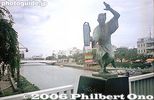
Sculpture of Awa Odori dancer
|
|

Marker and side road to Lord Gamo (Gamoh) Ujisato's gravesite. Near Aizu-Wakamatsu City Hall. Gamo Ujisato (1556-1595) was a feudal lord from Hino, Shiga Pref. He built Tsurugajo Castle and named the town Wakamatsu, after a place in his hometown.
|
|

Karasaki Pine Tree in Kenrokuen Garden 唐崎松
|
|

Weeping cherry and Senzoku-Ike Pond. Near Senzoku-Ike Station on the Tokyu Ikegami Line from Gotanda.
|
|

June 9, 2007. Hula dancers rush to Pukari Sanbashi Pier where the Hokule'a canoe is to dock. ぷかりさん橋
|
|

JR Okutama Station 奥多摩駅
|
|

Sumo wrestler banners
|
|

Japan's most famous temple, with the world's oldest wooden buildings (over 1,300 years old), is also the country's first World Heritage Site. Also called Ikaruga-dera, the temple is the headquarters of the Shotoku-shu Buddhist Sect. Path to
|
|

Musashigawa stablemaster (former Yokozuna Mienoumi) in the entrance hallInside the entrance hallway, there was a long table on the left side with ribbons which served as name tags for distinguished guests. Musashigawa is the name of Musashimaru's sumo stable.
|
|

View of Ainokura from a hill
|
|

JR Ryogoku Station platform for the Sobu Line.
|
|
|

Condensed mirror of Awa Odori dancerAibahama Park in the distance.
|
|
|

Ujisato was married to Oda Nobunaga's second daughter Fuyuhime. He died at age 40. One theory says that he was poisoned by Toyotomi Hideyoshi. Entrance to Lord Gamo Ujisato's gravesite within Kotokuji temple in Aizu-Wakamatsu, Fukushima..
|
|

The Karasaki Pine Tree is the garden's largest pine tree.
|
|

Senzoku-Ike Pond has a walking path which goes almost completely around. Only 1.2 km.
|
|

A crowd of a few hundred on hand to greet Hokule'a's arrival.
|
|

JR Okutama Station 奥多摩駅
|
|

Admission charged. The 1,000 yen ticket gets you into the three major sights.
|
|

Sumo wrestler and sumo stable banners
|
|
|

Entrance hall is clogged up by a side show of hula.
|
|
|

Friends after allKyokushuzan chats with fellow Mongolian Asashoryu.
|
|
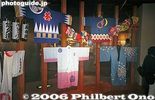
Awa Odori Kaikan museumHappi coats worn by Awa Odori dance troupes.
|
|

Free Awa odori lessons.
|
|

Entrance doors to Lord Gamo Ujisato's gravesite within Kotokuji temple which is a Zen temple of the Rinzai Sect.
|
|

Karasaki Pine Tree in Kenrokuen Garden, Kanazawa, Ishikawa Pref.
|
|

Senzoku-Ike Pond and cherry blossoms.
|
|

People crowd the waterfront near Pukari Sanbashi Pier.
|
|

JR Okutama Station 奥多摩駅
|
|

Kokugikan
|
|

Nandaimon Gate 南大門
|
|

JR Ryogoku Station 両国駅
|
|

Musashigawa Stable wrestlers greet visitorsIncludes Miyabiyama and Musoyama.
|
|

Bird's eye view of Ainokura 相倉展望台
|
|

Practice
|
|
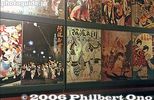
Awa Odori Kaikan museumAwa Odori publicity posters.
|
|

Lining up for the non-reserved spectator seats.
|
|

Family crest on door. (Not the Gamo crest.)
|
|
|

Map of pond
|
|

People crowd the waterfront near Pukari Sanbashi Pier.
|
|

Okutama Station at night
|
|

Kokugikan ticket office (right). Ticket prices range from 2,100 yen to 14,300 yen.
|
|

JR Ryogoku Station. This part of the station building is now a beer hall. The train station entrance has moved to the right of this.
|
|

Horyuji temple, Nandaimon Gate, National Treasure 南大門(国宝)
|
|

In the entrance hall, hula and Hawaiian music direct from Hawaii
|
|
|
|
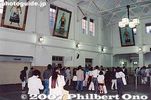
Old entrance to Ryogoku Station with a high ceiling and giant portraits of sumo wrestlers.
|
|
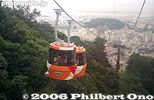
Bizan Ropeway 眉山ロープウェイ
|
|

The Awa Odori begins before dark.
|
|

Grounds of Lord Gamo Ujisato's gravesite within Kotokuji temple. Since Ujisato was a Christian lord, it is ironic that he be buried in a Buddhist temple in Kyoto and Aizu-Wakamatsu.
|
|

Horai island 蓬莱島
|
|

Bridge
|
|

Hokule'a already in sight well before 11 am when it was scheduled to dock.
|
|

2nd floor of Okutama Station has a gallery and soba shop
|
|

Kokugikan ticket office. Cheap tickets costing 2,100 yen are sold every day of the tournament, but sell out fast by noon or so.
|
|

Founded in 607 by Prince Shotoku Taishi, Horyuji is one of Japan's most famous temples, with the world's oldest wooden buildings (over 1,300 years old). Japan's first World Heritage Site.
|
|

The retirement ceremony had a lot of Hawaiian touches. This was only the beginning.Hula dancers and live Hawaiian band from Hawaii.
|
|

Ainokura
|
|

Me next please!!!The winner gets to decide who to wrestle next. The rikishi all beg to be picked.
|
|

Bizan Ropeway眉山ロープウェイ
|
|
|
|

Statue of Prince Yamato Takeru 日本武尊像(明治紀念之標)Memorial built in 1880 dedicated to the fallen warriors of Ishikawa Prefecture who fought in the Satsuma Rebellion.
|
|
|
|

Hokule'a and escort ship Kama Hele. What makes this canoe so special and famous is that it was used to sail from Hawaii to Tahiti (and many other places) without any modern navigational instruments.
|
|

Okutama Station platform
|
|

Also called Ikaruga-dera, the temple is the headquarters of the Shotoku-shu Buddhist Sect founded by Shotoku Taishi.
|
|

Present entrance to Ryogoku Station (during spring festival).
|
|

Gate to enter Kokugikan.
|
|

Konishiki also sings. (His company arranged the entertainment.)
|
|
|

The Bulgarian (Kotooshu) on the left
|
|

View of Tokushima city from Bizan眉山
|
|
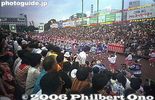
All spectator seats were taken.
|
|

Poem monument reads 限りあれば吹かねど花は散るものを心短き春の山風
|
|

Statue of Prince Yamato Takeru 日本武尊像
|
|

Hachimangu Shrine torii
|
|

They only referred to the sun, moon, the stars, and ocean waves to navigate through the vast Pacific Ocean or Polynesia. This is called celestial navigation. Extremely few people can do this, and the Hawaiians are learning this skill of long-ago.
|
|

At the gate, you might see a famous former wrestler (like former Takamiyama from Hawaii, now Stablemaster Azumazeki) taking your ticket.
|
|

西院伽藍
|
|

Ryogoku Station exit. Only one sumo portait hangs here.
|
|
|

Musashigawa Stable wrestler wearing Aloha-print yukataFlowery pattern (plumeria) with "Musashimaru" imprinted.
|
|

View of Tokushima city from Bizan眉山
|
|
|

Path to Lord Gamo Ujisato's gravesite
|
|

Neagari-no-matsu Pine tree with rising roots. 根上松
|
|

Hachimangu Shrine torii
|
|

They wanted to prove that the original native Hawaiians were able to sail between Tahiti to Hawaii on purpose, and that they did not land on Hawaii by accident.
|
|

Map of Ryogoku. The Kokugikan sumo arena is north of the station, as well as the Edo-Tokyo Museum.
|
|

Front of Kokugikan. The wide stairs make it quick for many people to exit the building. It is a sleek, modern building with a spacious interior. The roof collects rainwater for use in the toilets.
|
|
|
|

Musashimaru souvenirs at the Kokugikan's souvenir shop
|
|

Ainokura
|
|

Ready to pounce on the winner
|
|
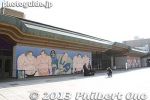
After you go through the ticket gate, the front of Kokugikan has two large murals.
|
|
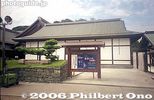
Tokushima Castle museum 徳島城博物館徳島城博物館
|
|
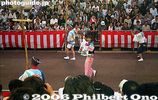
Actress Fujita Tomoko heads one dance troupe.
|
|

Lord Gamo Ujisato's grave.
|
|

Neagari-no-matsu Pine tree with rising roots. 根上松
|
|

Hachimangu Shrine
|
|

Hokule'a and Yokohama Bay Bridge in the background.
|
|

Map of Horyuji. Large complex of buildings. Only two precincts are open to the public.
|
|

Musashimaru merchandise
|
|

Ainokura is smaller than Shirakawa-go, but still tourist-driven.
|
|
|
|
|
|
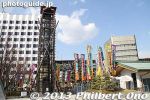
Taiko drum tower
|
|
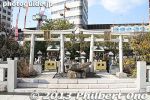
Two small shrines outside.
|
|
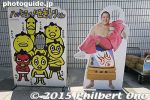
Pose with a cutout of popular rikishi Endo.
|
|

Pose with a cutout of popular rikishi Endo.
|
|
|
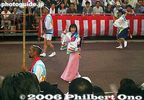
The festival usually features a celebrity or two. This is actress Fujita Tomoko at the Tokushima Awa Odori.
|
|

Lord Gamo Ujisato's grave. This is a secondary grave, where his hair is buried. His main grave is at a temple in Kyoto where he died at age 40.
|
|

Winter cherry blossoms.
|
|

Hachimangu Shrine. Do not climb on the horse.
|
|

One sail unraveled.
|
|

Horyuji and World Heritage Site (Japan's first) marker
|
|

Musashimaru doll
|
|
|

Asashoryu joins in
|
|

Entrance to Chomeiji Temple. MAP
|
|

Ferry boat from Takamatsu to Megishima. 20 min. ride.
|
|
|
|

Gardeners
|
|

JR Kokubunji Station, South Entrance.
|
|

Entrance to Tonogayato Teien Garden, 2-min. walk from Kokubunji Station.
|
|

Koku-Koen Station on the Seibu Shinjuku Line 航空公園駅
|
|

"Senzoku" means "wash feet." One legend says that Nichiren washed his feet in the pond.
|
|

Nearing Pukari Sanbashi Pier. The question was, which side of the pier would it dock? (Was going the other side so I rushed over to the other side.)
|
|

Sumo wrestlers enter through a side entrance. Fans wait for their favorite wrestlers.
|
|

Sai-in Garan West Precinct 西院伽藍
|
|
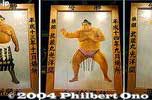
Giant painted pictures of Musashimaru decorating the arena inside. Each one commemorates a tournament victory.These giant pictures are actually black-and-white photographs taken in a photo studio and printed on large paper. Then it is hand-painted in color by a woman who has been doing it for years.
|
|
|
|
|
|

The tombstone has five segments each with a kanji character. 五輪塔
|
|
|
|

Map of Tonogayato Teien Garden.
|
|

Inside Kokubunji Station
|
|

In front of Koku-Koen Station. Notice the paper plane sculpture and YS-11 prop plane.
|
|

The area with the cherry trees is called Sakurayama.
|
|

Hokule'a nears the dock.
|
|

Entrance lobby. At the end of the lobby is a trophy showcase. On the last day of the tournament, the tournament winner will walk through here to his car for a victory parade amid a large crowd.
|
|

三経院 National Treasure
|
|

The ceremony opens with taiko drum beating on the sumo ring.
|
|
|

Both ozeki watch
|
|
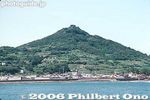
Megishima is associated with Momotaro, a famous folk tale.
|
|
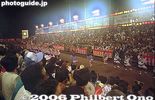
My compact camera lens had a flare/halation problem.
|
|

Explanation of the kanji characters on the tombstone. From top to bottom, the characters are for "Sky, wind, fire, water, and earth."
|
|

Tiny pink flowers
|
|

Greenery greets you first.
|
|

Inside Kokubunji Station
|
|

Paper plane sculpture
|
|
|

A rope is thrown to the dock from Hokule'a.
|
|

Side of lobby. (Passing out free calendar posters during Jan. tourney.)
|
|

Horyuji temple Five-Story Pagoda and Kondo Hall, National Treasures 五重塔 金堂
|
|

Sumo exhibition matches with lower division Makushita wrestlers.A retirement ceremony for an important sumo wrestler includes a variety of activities besides the actual ceremony of cutting away the topknot. It involves almost the entire Japan Sumo Association, and most wrestlers in the top three divisions (Makushita, Juryo, and Makunouchi) also appear in exhibition matches.
|
|
|
|
|
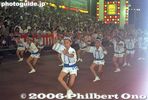
Finally found a seat closer to the road.
|
|

Portrait of Lord Gamo Ujisato
|
|

Kasumigaike Pond
|
|

ハナモモ はなかいど
|
|

Kokubunji Station, North Exit
|
|

Another sculpture in the Aviation Memorial Park.
|
|

Bentenjima, a small peninsula connected by a bridge.
|
|

Hokule'a arrives right on schedule at 11 am on June 9, 2007. Yokohama is its last stop.
|
|

Sumo mural in lobby.
|
|
|

Makushita sumo matchLower-division wrestlers wear black belts, while the upper division wrestlers wear white belts (during practice) or colored belts during official matches.
|
|

Center of Ainokura and souvenir shop.
|
|

In the entrance hall are life-size cutouts of the top wrestlers.
|
|
|

Megishima beach 女木島
|
|
| 2809 files on 12 page(s) |
1 |
 |
 |
 |
 |
|